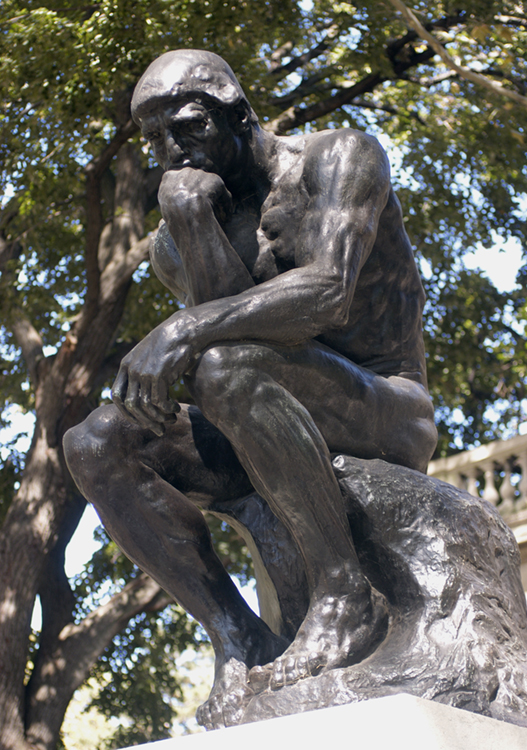Today, November 17, marks the 100th anniversary of the death of prolific French sculptor Auguste Rodin (1840-1917). Earlier this year, the Grand Palais in Paris, France, celebrated the anniversary with “Rodin: The Centennial Exhibition” from March through July. The Grand Palais (an exhibition hall and museum complex) collaborated with the nearby Rodin Museum to feature numerous masterpieces created by Rodin, largely considered the greatest sculptor of the late 1800’s and early 1900's. The Rodin exhibit and celebration extended to art museums in Berlin, Chicago, Cleveland, San Francisco, and other world cities.
Rodin created an enormous number of sculptures of the human figure. Many of them have a great deal of emotional intensity, and explore a wide range of human passions. The inner feelings of his figures are expressed through a vigorous sense of movement and by gestures that emphasize different parts of the body. Many of his figures are incomplete or fragmentary. These works consist of just a torso, a head, or hands.

Rodin was primarily a modeler, preferring to work with clay and wax rather than to carve in stone. After he created the original model, his assistants would translate it into marble or bronze. Inspired by the Renaissance sculptor Michelangelo, Rodin’s marble figures are often beautifully smooth and finished, emerging from parts of the marble that are often very rough. The surfaces of his bronze works combine a thorough understanding of anatomy with a rough texture that allows light and shadow to enliven the work.
Rodin was born in Paris on Nov. 12, 1840. He did not win public recognition for many years, and he had to earn his living designing popular sculpture and ornament for commercial firms. Indifference and misunderstanding greeted his first exhibits, but appreciation for his work gradually spread. By 1880, his genius began to be more widely appreciated, and by the 1900's, he was world famous.
In 1880, Rodin was commissioned by the French government to create a large sculptural door for the Museum of Decorative Art in Paris. The subject was the “Inferno” from Dante’s Divine Comedy. The door was never finished, but Rodin created many figures for it. Later, he developed many of them as independent sculptures. The best known include The Thinker and The Kiss. Rodin’s most important later works include the monumental group The Burghers of Calais and the monument to author Honoré de Balzac.
Untitled Document
Can't view the linked articles? Subscribe to World Book Online

World Book Online delivers a progressive sequence of core databases supported by supplemental
tools, such as language translation, graphic organizers, and unique Webquests. Moving from
Early World of Learning to World Book Advanced, World Book Online aligns end-users with their
appropriate learning levels. Each stand-alone site provides additional features to support the
needs of users’ specific capabilities.
The World Book Difference
World Book combines cutting-edge technology with traditional editorial excellence to produce
authoritative, trustworthy, and unbiased content. The digital content is updated in real time and
carefully curated for each learning level. Accessible 24/7, the content is available on a variety of devices.
World Book Online combines 21st-century instructional techniques with timely information.
By breaking down complex topics and using easily understandable text, World Book Online helps to
build fluency and increase comprehension. Featuring single sign-on capability, these sites are paired
with highly visual content to engage even the most reluctant reader. Our collection of resources kindles
a lifelong learning experience for every user. This adherence to clarity, currency, and accuracy makes
World Book’s digital offerings an information hub for the classroom, library, and beyond.
Image 1: Auguste Rodin poses before a work in progress. Credit: © Bridgeman Art Library/SuperStock
Image 2: Auguste Rodin’s The Thinker is one of the French sculptor’s most famous works. Several versions of this statue exist. Credit: The Thinker (1880), bronze statue by Auguste Rodin; Musee Rodin, Paris, France (© Timothy McCarthy, Art Resource)